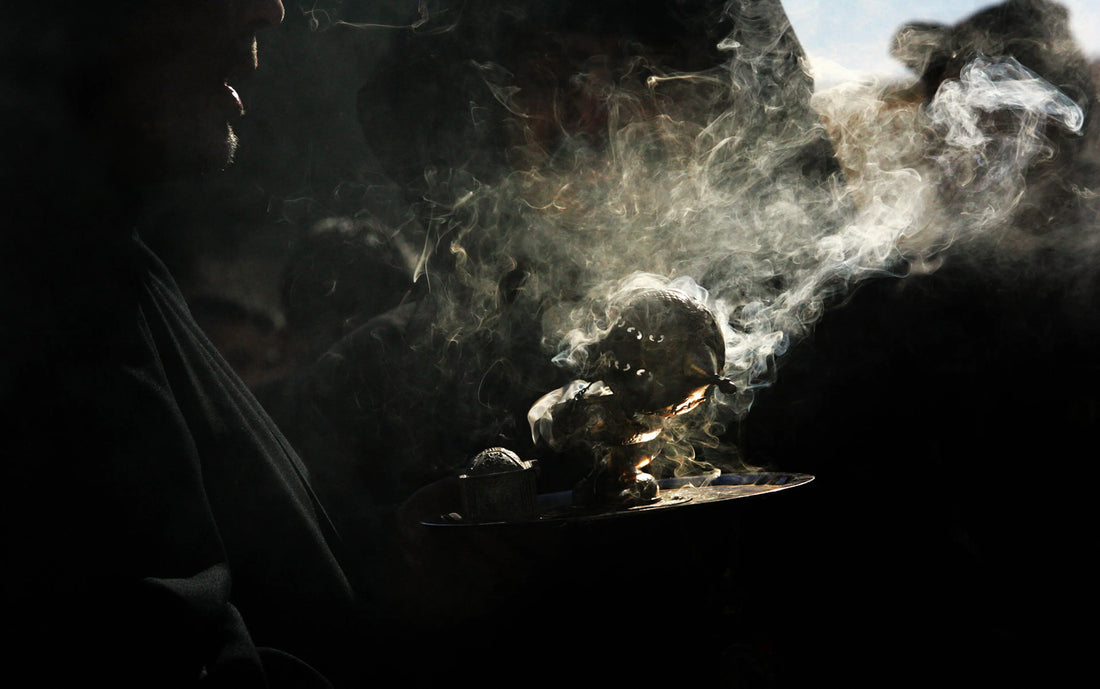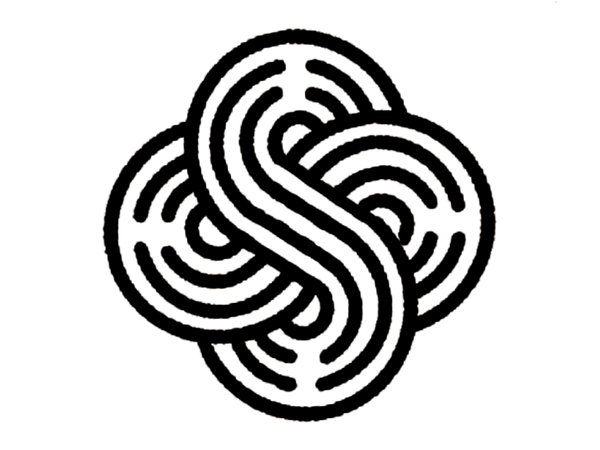
The Timeless Union of Frankincense and Myrrh: History, Rituals, and Harmony
Awaken To The OneShare
The Ancient Dance of Smoke: Frankincense and Myrrh Burning Together
For millennia, the fragrant curls of smoke from frankincense and myrrh have intertwined, rising to meet the heavens. These two resins, steeped in history, spirituality, and mysticism, have traveled through time as a powerful duo, evoking reverence in rituals, healing practices, and sacred traditions. Together, they create a synergy that transcends their individual qualities, weaving a story of divine connection, trade, and spiritual transformation.
The Origins of Frankincense and Myrrh
Frankincense and myrrh are aromatic resins derived from trees native to the Arabian Peninsula, northeastern Africa, and parts of India. Frankincense comes from the Boswellia tree, while myrrh is the sap of the Commiphora tree. Both are harvested through a process of tapping the bark, allowing the resin to seep out and harden into golden-hued tears.
Frankincense: The Gift of the Heavens
The word “frankincense” is derived from the Old French term franc encens, meaning "high-quality incense." Used for over 5,000 years, frankincense was treasured in ancient Egypt, Mesopotamia, and India. It was burned in temples to purify the air and create a sacred atmosphere. In Christianity, frankincense became one of the gifts of the Magi to the infant Jesus, symbolizing divinity.
Myrrh: The Balm of Mortality
Myrrh, whose name originates from the Arabic word murr (meaning "bitter"), has an equally storied past. It was prized in embalming practices in ancient Egypt, symbolizing the eternal preservation of the soul. In Biblical accounts, myrrh represented suffering and mortality, often used in anointing oils and burial rites.
Both resins held immense economic value in the ancient world, rivaling gold in their worth. They were carried along the incense trade routes, spreading their influence from the Arabian deserts to the heart of Europe and Asia.
How Frankincense and Myrrh Found Each Other
While frankincense and myrrh are derived from different trees and regions, their paths converged due to their shared use in religious, medicinal, and ritualistic practices. In ancient temples of Egypt, Greece, and Rome, they were often burned together to invoke divine favor and protection.
The pairing of these resins likely emerged from their complementary properties. Frankincense, with its bright, citrusy, and slightly pine-like aroma, symbolizes ascent, light, and purification. Myrrh, with its rich, earthy, and grounding scent, represents descent, grounding, and protection. Together, they create a balanced duality: light and shadow, divine and human, heaven and earth.
The Ritual of Burning Frankincense and Myrrh Together
Burning frankincense and myrrh is more than a sensory experience—it is a ritual steeped in intention and spirituality. The process often involves placing the resins on a piece of lit charcoal, allowing the heat to release their aromatic compounds. As the smoke rises, it carries prayers, intentions, and energies into the spiritual realm.
The Symbolism of Their Union
- Duality and Balance: Frankincense represents the masculine and the ethereal, while myrrh embodies the feminine and the earthy. Their union creates harmony between opposing forces.
- Purification and Protection: Frankincense cleanses the space, while myrrh fortifies it, creating a sacred barrier against negativity.
- Spiritual Connection: In many traditions, the smoke is seen as a bridge between the earthly and the divine, aiding in meditation, prayer, and communion with higher realms.
Modern and Historical Uses
- Temples and Churches: The Catholic Church continues the tradition of burning frankincense and myrrh during Mass, symbolizing prayer rising to God.
- Healing Rituals: Combined, the resins are believed to have antiseptic and anti-inflammatory properties, purifying the air and promoting respiratory health.
- Energy Work: In spiritual practices, their smoke is used to cleanse auras, align chakras, and protect against malevolent forces.
Why Frankincense and Myrrh Pair So Well Together
The combination of frankincense and myrrh is more than the sum of its parts. Chemically and energetically, the two resins complement each other in profound ways.
- Aromatic Synergy: Frankincense’s uplifting citrus notes lighten myrrh’s darker, balsamic tones, creating a fragrance that is simultaneously invigorating and grounding.
- Holistic Healing: Frankincense is associated with the crown chakra, promoting enlightenment and connection, while myrrh is tied to the root chakra, fostering stability and grounding. Together, they harmonize the body’s energy centers.
- Symbolic Resonance: Both resins are deeply tied to themes of life, death, and rebirth. Frankincense’s rising smoke symbolizes the soul’s ascent, while myrrh’s earthy scent reminds us of life’s transience and the need for grounding.
The History of Their Combined Use
The use of frankincense and myrrh together can be traced back to ancient Egypt, where they were staples in rituals and ceremonies. The Egyptians believed that burning both resins pleased the gods and ensured protection in the afterlife. They were used in embalming to preserve the body and guide the soul.
In the Greco-Roman world, frankincense and myrrh were essential in state-sponsored rituals. The Roman historian Pliny the Elder noted their use in temple ceremonies and as offerings to deities. The dual resins also found their way into Chinese medicine and Ayurvedic practices, where they were blended into salves and oils.
Biblical traditions further cemented their pairing. The Magi’s offering of frankincense and myrrh to Jesus symbolizes their spiritual and medicinal significance. Early Christian rituals adopted the practice of burning them together, a tradition that continues in Orthodox and Catholic liturgies.
Practical Tips for Burning Frankincense and Myrrh
If you wish to incorporate the ritual of burning frankincense and myrrh into your life, here are some practical tips:
- Prepare Your Space: Choose a quiet, sacred space for the ritual. Cleanse the area physically and energetically before beginning.
- Use a Charcoal Disc: Place the disc in a heatproof burner, light it, and allow it to become hot.
- Add the Resins: Place small pieces of frankincense and myrrh onto the charcoal. Allow the smoke to fill the space, carrying your intentions.
- Set an Intention: Whether it’s purification, meditation, or prayer, focus on your purpose as the smoke rises.
- Practice Safely: Always burn resins in a well-ventilated area and keep them away from flammable materials.
The Legacy of Frankincense and Myrrh
The union of frankincense and myrrh is timeless, representing humanity’s eternal quest for connection, balance, and transcendence. From ancient temples to modern rituals, their combined smoke continues to inspire awe, calm the spirit, and heal the soul.
Their story is one of harmony—light and dark, ascent and grounding, divine and mortal. In burning them together, we not only honor the past but also participate in a tradition that transcends culture, religion, and time.
So the next time you light frankincense and myrrh, take a moment to reflect on the ancient history and profound symbolism contained in their fragrant dance. Let their smoke carry your spirit to new heights and anchor you in sacred ground.
